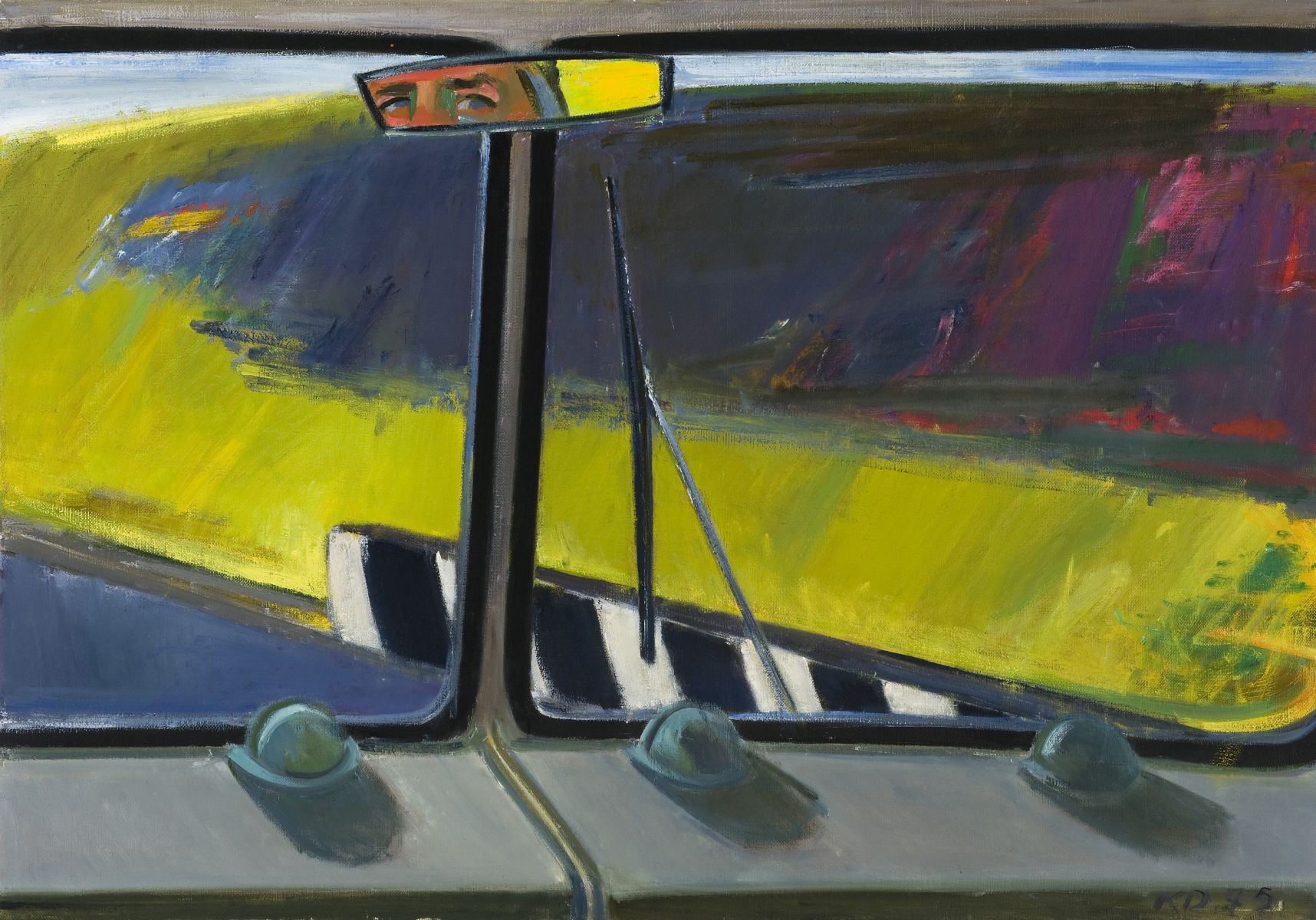The interest painters expressed in the 1970s in the present day and in routine life — their effort to reconcile themselves with the inevitability of Soviet reality — was piecemeal, conditional and short-lived. In the works created by the quartet, the present was always somehow linked to the past.
The beauty of the routine is very fleeting in paintings by Dereškevičius. An ossified moment of a busy life captured in cold, artificial light appears like a frozen frame of a film. Photographic images, like photographs themselves or the residual traces of reality, capture an irretrievable past. In his assemblages made of the paper residue of civilisation and recovered intimate objects, Dereškevičius connects love to the transience of domestic life and a nostalgia for the past. The announcement displays covered in the remnants of old posters that he began painting around 1980 also testify to the destructive effect of time and the transience of life’s events.
Arvydas Šaltenis distanced himself from the aesthetics of form of earlier generations of painters, believing that life is already beautiful as it is and does not require further embellishment in works of art. The difference between what is seen and what is imagined in the artist’s brisk, expressively realistic paintings is not entirely clear, because the fragments of the visible routine of life in his work are often assembled into a seamless composition that could not possibly exist in reality. Šaltenis always liked to repeat the same motifs, one of which was the tiresome and tedious waiting people had to endure in crowded spaces — the oppressively prolonged present moment.
Dawdling and delay in his paintings are evidenced by closed, claustrophobic spaces, human inactivity and apathy in the face of physical coexistence. Time is experienced differently when one talks on the telephone, drives or mourns a loved one by a coffin. Šaltenis’ mandatory service in the Soviet Army also left its mark on the different experience of time in the artist’s work. For Šaltenis, as for Dereškevičius, the “sardine can” was frequently referenced in paintings as a mode of transportation and a model employed to examine the structure of a depicted space. Enamored with the work of Francis Bacon, Šaltenis also attempted to paint poor states of health — vomiting or the thirst brought on by a hangover.
Algimantas Kuras, like Šaltenis, painted bleak objects typical of the Soviet era as well as unpleasant moments in time, such as defecting in the doorless stalls of a railroad station public bathroom. In his painting series Seni daiktai gamtoje (Old Things in Nature) (1977-1979), he depicts worn, broken or discarded objects and devices — remnants of technological progress against a verdant landscape. Their decaying state serves to further emphasize the entropy of his painting style: a shriveled and pale range of colours and casual brush strokes. Vanishing can sometimes occur quite suddenly — when a mine explodes, for example. The theme of disappearing, transience and death is augmented by natural landscapes revealing the traces of a person who has just departed the scene. The shadow of such a vanished body often appears as a black jacket against the background of a darkening sky. The colour black, the symbol of mourning and pessimism, became an enduring and integral feature of Kuras’ painting. The artist created his ironically melancholic assemblages from the strange products of the era (metal mourning wreaths, for example) which, when reused, became hopeless relics.
Šaltenis not only painted in memoriam genre paintings, including within them recreations of portrait photographs, he also referenced famous works of art. Algimantas Švėgžda, who in his early creative period favoured sleek wavy lines and colour planes, created a painting called EM in 1978, in which he presented a precise depiction of an 1845 self-portrait by the printmaker Edvard Munch, placed behind a sheet of glass that contained a reflection of a window and a silhouette of Švėgžda himself.




Comments
Write a comment